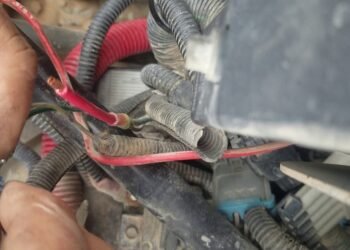Should you pre-fill an oil filter? The short answer is: it depends on your vehicle and personal preference.
Pre-filling an oil filter can ensure better oil flow during the initial startup, but it’s not always necessary. Changing your car’s oil filter can be a straightforward task. Yet, many people wonder if pre-filling the oil filter is a good practice.
Pre-filling can help reduce the time it takes for oil to reach the engine, minimizing wear during those first few seconds after an oil change. However, not all vehicles require this step, and it can be messy if not done carefully. Understanding the pros and cons will help you decide if this extra step is worth your time. Let’s explore the details to make an informed decision.
Introduction To Pre-filling Oil Filters
Many car enthusiasts and mechanics debate whether to pre-fill an oil filter. Understanding this practice can help you make informed decisions about your vehicle’s maintenance.
Purpose Of Pre-filling
The main goal of pre-filling an oil filter is to ensure proper lubrication. This helps prevent a dry start, which can cause engine wear.
When you pre-fill an oil filter, you reduce the time it takes for oil to reach critical engine parts. This provides immediate protection during the first few seconds of engine start-up.
Newer engines and high-performance vehicles especially benefit from this practice. It ensures that the engine is protected right from the start.
Common Practices
Many mechanics recommend pre-filling oil filters, especially for larger engines. This is because larger engines require more oil, and a dry start can be more damaging.
To pre-fill an oil filter, pour new oil into the filter before installing it. Wait for the oil to soak into the filter media, then top it off. This ensures the filter is fully saturated.
For smaller engines, pre-filling might not be necessary. Always refer to your vehicle’s manual for specific recommendations.
Some mechanics prefer to install the filter dry. They believe the oil pump will quickly fill the filter and lubricate the engine. This might be true for modern engines with advanced oil pumps.
Benefits Of Pre-filling Oil Filters
Pre-filling an oil filter before installation can offer several advantages. This practice can enhance your engine’s performance and longevity. Let’s explore the key benefits of pre-filling oil filters.
Enhanced Engine Protection
One of the primary benefits of pre-filling an oil filter is enhanced engine protection. When you pre-fill the filter, you ensure that oil flows immediately upon starting the engine. This quick oil flow helps to prevent any dry starts, which can cause significant damage. A well-lubricated engine runs smoothly, reducing the risk of overheating and other issues.
Reduced Wear And Tear
Pre-filling the oil filter also contributes to reduced wear and tear. By ensuring that oil is present from the moment the engine starts, you minimize metal-on-metal contact. This practice helps to extend the lifespan of engine components. Less friction means that parts will not wear out as quickly.
To summarize, pre-filling oil filters is a simple step that can lead to better engine protection and reduced wear and tear. These benefits make it a worthwhile practice for anyone looking to maintain their vehicle’s performance and longevity.
Step-by-step Guide To Pre-filling
Pre-filling an oil filter can ensure that your engine gets proper lubrication right from the start. It can help prevent dry starts and protect your engine. Here’s a simple guide to pre-filling your oil filter.
Necessary Tools
Before starting, gather all the necessary tools. You will need the new oil filter, clean engine oil, a funnel, and a clean cloth. Having everything ready makes the process smooth and efficient.
Proper Technique
First, open the container of clean engine oil. Place the new oil filter on a stable surface. Next, use the funnel to pour oil into the filter. Fill it about halfway to avoid spills.
Let the oil absorb into the filter for a minute. This ensures the filter media gets saturated. After that, top off the oil until the filter is almost full.
Take the clean cloth and wipe off any excess oil from the outer surface of the filter. Check for any leaks before installation. Now, your oil filter is ready to be installed on the engine.

Credit: www.motor1.com
Expert Tips For Pre-filling
Pre-filling an oil filter can help ensure your engine runs smoothly. It reduces the chances of dry starts and helps the oil circulate faster. Here are some expert tips to make the process easy and effective.
Choosing The Right Oil
Using the right oil is crucial. It ensures the oil filter works correctly. Always check your car’s manual to find the recommended oil type. Make sure the oil you choose matches the viscosity and quality standards set by the manufacturer.
| Oil Type | Viscosity | Quality Standard |
|---|---|---|
| Conventional | 10W-30 | API SN |
| Synthetic | 5W-30 | API SP |
| Semi-Synthetic | 10W-40 | API SN |
Avoiding Common Mistakes
Avoid overfilling the oil filter. Too much oil can cause leaks and poor performance. Fill the filter about halfway. This is usually enough for most filters.
Check the seal on the oil filter. Make sure it’s intact and not damaged. A damaged seal can lead to leaks and other issues.
Use clean oil for pre-filling. Dirty oil can introduce contaminants into your engine. Always use fresh oil from a sealed container.
Install the filter correctly. Screw the oil filter on tightly, but do not over-tighten. Hand-tight is usually sufficient. Use a filter wrench if necessary, but be careful not to apply too much force.
Summary
- Choose the right oil based on your car’s manual.
- Avoid overfilling the oil filter.
- Check the oil filter seal for damage.
- Use clean, fresh oil for pre-filling.
- Install the filter hand-tight, not too tight.
Following these tips can make pre-filling your oil filter a simple task. It can also help keep your engine running smoothly and efficiently.
When Not To Pre-fill
Pre-filling an oil filter can save time and help avoid dry starts. But, there are specific situations where pre-filling might not be the best option. Below, we explore when you should avoid pre-filling an oil filter.
Specific Engine Types
Not all engines are designed the same. Some modern engines have unique configurations. These setups might make pre-filling the oil filter more challenging or even risky.
| Engine Type | Reason to Avoid Pre-Filling |
|---|---|
| Horizontally Opposed Engines | Oil may spill due to sideways installation. |
| Turbocharged Engines | May require specific oil flow patterns. |
| High-Performance Engines | Precision in oil levels is critical. |
Potential Risks
Pre-filling an oil filter might seem like a good idea, but there are risks involved.
- Oil Spillage: Pre-filling can lead to spills during installation, causing mess and potential hazards.
- Contamination: Introducing contaminants inadvertently during the pre-fill process can harm the engine.
- Incorrect Filling: Overfilling or underfilling the filter can disrupt the oil pressure balance.
Weighing these risks against the benefits is crucial. While pre-filling can be helpful, it is not always necessary and can sometimes be counterproductive.

Credit: www.motor1.com
Comparing Pre-filling Vs. Not Pre-filling
Deciding whether to pre-fill an oil filter or not is a common dilemma for vehicle owners. Both methods have their pros and cons. Let’s compare the differences between pre-filling and not pre-filling your oil filter.
Performance Differences
Pre-filling an oil filter helps in immediate oil circulation. This reduces engine wear during the first start after an oil change.
Not pre-filling may lead to a brief period where the engine runs without full lubrication. This can affect performance and cause minor wear and tear.
Long-term Effects
Pre-filling could extend the life of your engine. Consistent lubrication from the start can prevent early wear.
Not pre-filling might not have immediate effects. But, over time, repeated dry starts can contribute to the engine’s wear and tear.
Real-world Experiences
Many car owners ask if they should pre-fill an oil filter. This question often sparks debate. Real-world experiences offer valuable insights. Let’s explore what mechanics and users say.
Mechanic Insights
Mechanics have years of experience. They know the ins and outs of cars. Many mechanics recommend pre-filling oil filters. They believe it helps the engine. Pre-filling reduces the time the engine runs dry. This can prevent wear and tear. It can also ensure smoother operation after an oil change.
Some mechanics prefer not to pre-fill. They argue it can be messy. They also believe the oil pump can fill the filter quickly. No harm done. Each mechanic has their own methods. Their experiences vary based on the cars they work on.
User Testimonials
Car owners also share their experiences. Some users always pre-fill their oil filters. They feel it gives them peace of mind. They like knowing their engine has immediate oil flow. These users report smoother startups and fewer issues.
Other users skip pre-filling. They find it too messy. They trust their car’s oil pump to do the job. Some have never had problems. They see no need to change their routine.
Real-world experiences can guide your decision. Consider both mechanic insights and user testimonials. Each car is different. Find what works best for you.

Credit: www.youtube.com
Frequently Asked Questions
Is It Necessary To Pre Fill An Oil Filter?
Pre filling an oil filter is not necessary. It helps avoid dry starts.
How To Pre Fill An Oil Filter?
Pour oil into the filter. Let it soak. Install the filter.
Can You Install An Oil Filter Without Pre Filling?
Yes, you can. The engine will fill it during startup.
Why Do Some Mechanics Pre Fill Oil Filters?
Pre filling reduces the time the engine runs without oil.
What Happens If You Don’t Pre Fill An Oil Filter?
The engine may run dry briefly. This can cause minor wear.
Conclusion
Pre-filling an oil filter has its pros and cons. It can help prevent dry starts. It also ensures oil reaches engine parts faster. Yet, it can be messy and time-consuming. For many, skipping this step works fine. Always follow your vehicle’s manual for guidance.
If unsure, consult a trusted mechanic. Choose what feels right for you and your car. Safety and engine health should always come first. Happy driving!
















